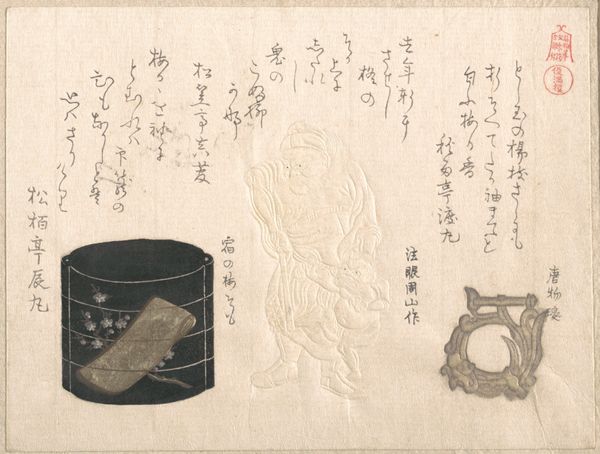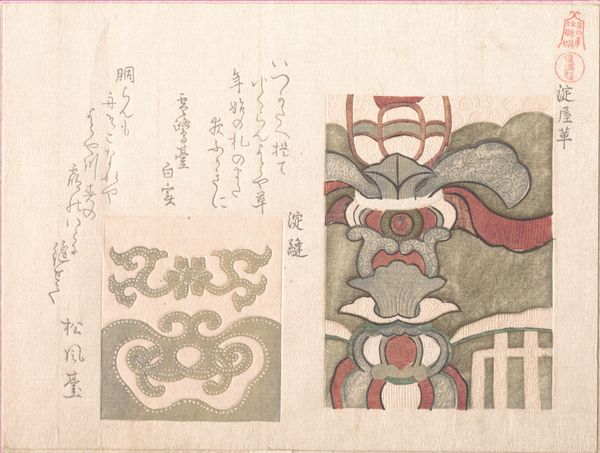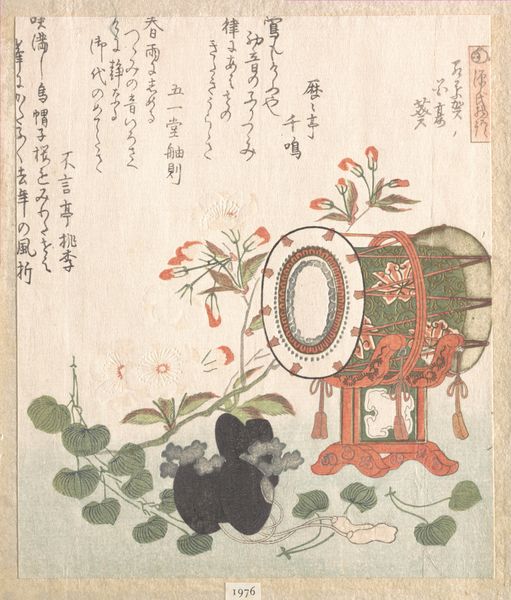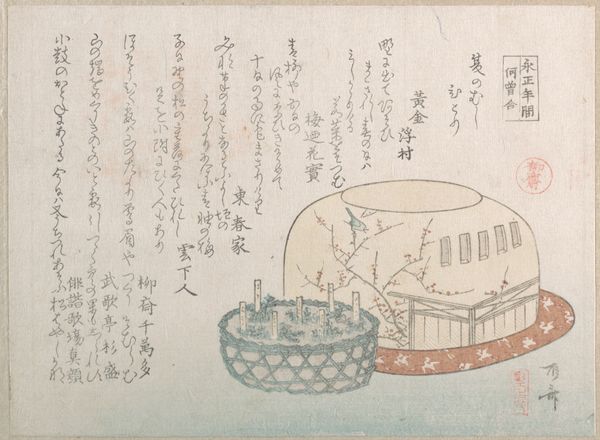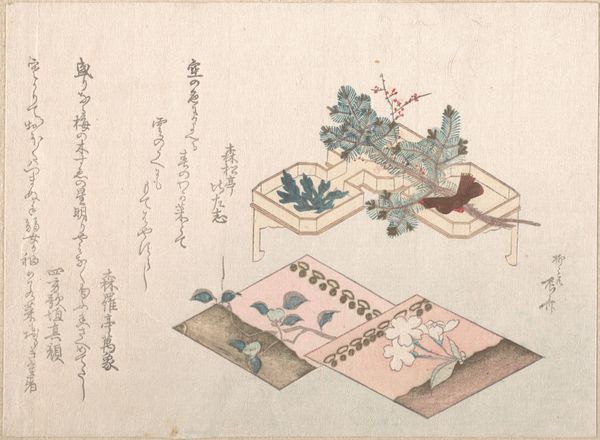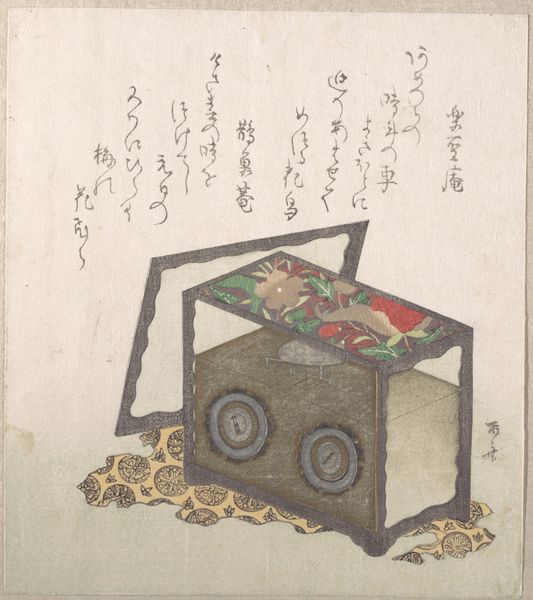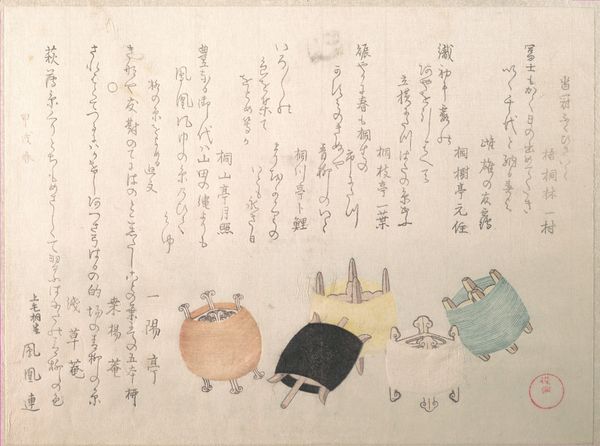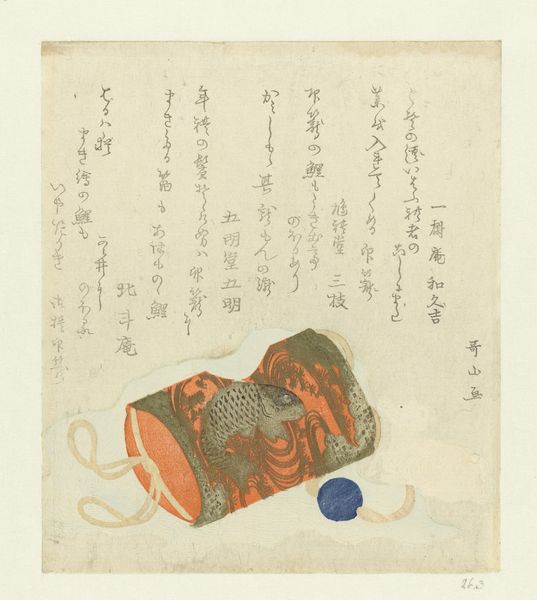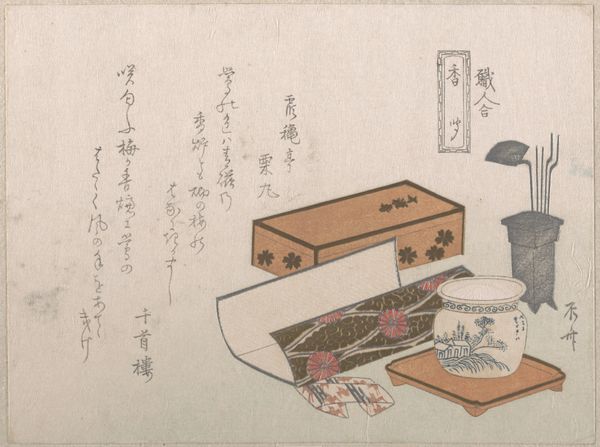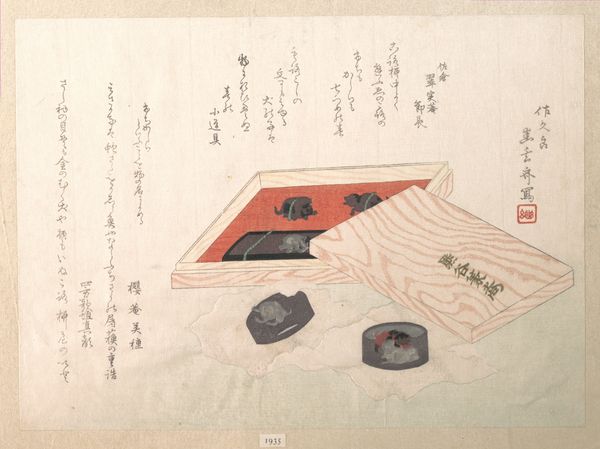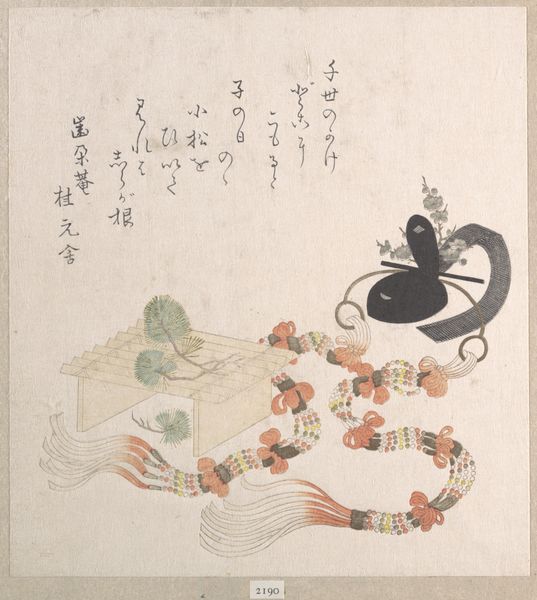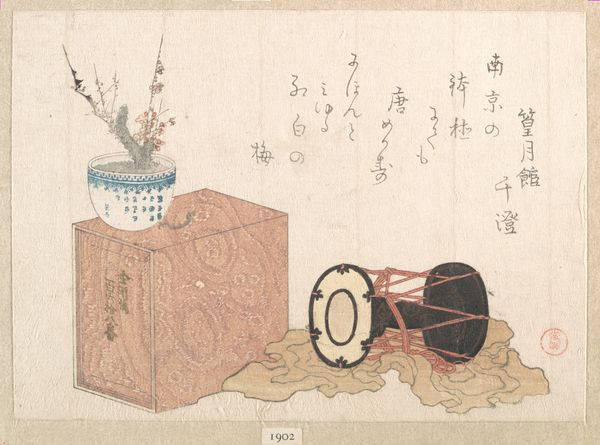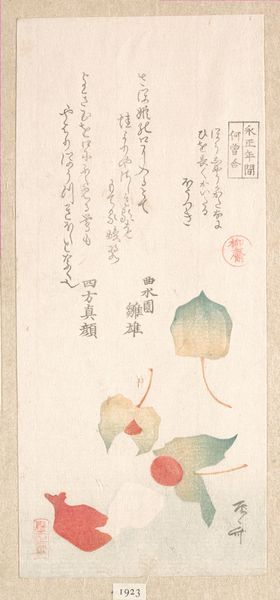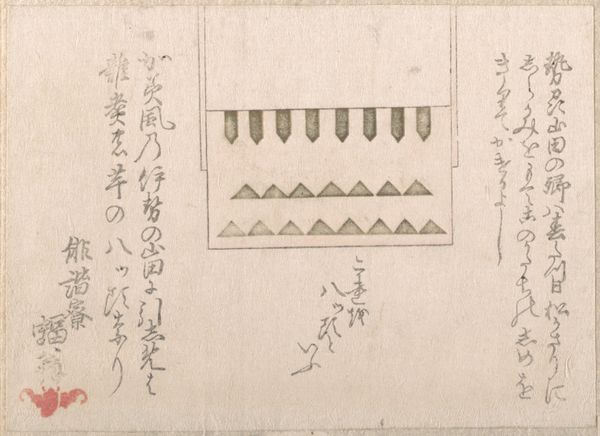
print, watercolor
#
water colours
# print
#
asian-art
#
ukiyo-e
#
watercolor
Dimensions: 5 3/8 x 7 1/4 in. (13.7 x 18.4 cm)
Copyright: Public Domain
Curator: This piece, currently residing at the Metropolitan Museum of Art, presents an exquisite "Inro and Two Netsuke" crafted in the 19th century by Kubo Shunman. It exemplifies Ukiyo-e artistry, realized through delicate watercolors and print techniques. Editor: It has such an ethereal quality about it, doesn't it? A pale sort of elegance. I'm struck by the ghostly, almost tactile quality of the figure. What am I even looking at? The arrangement seems so purposeful, like an inventory. Curator: Precisely. It serves not only as an artwork but also as a historical record of material culture. Inro were small, tiered cases for holding personal items, and netsuke are toggles used to secure them to the obi, or sash, of a kimono. Here, Shunman showcases the artistry inherent in these everyday objects, elevating them to subjects of aesthetic appreciation. This echoes a broader trend where depictions of luxury items acted as indicators of social status. Editor: It's fascinating how something functional transforms into a symbol. The texture in that netsuke is very interesting and intriguing! Was this meant for an exclusive audience? Curator: Most definitely. The appreciation of fine craftsmanship and the leisure to engage with these objects were distinctly upper-class privileges. The print itself, rendered in water colors, would have been accessible to a specific demographic, signaling a society where consumption patterns were intrinsically linked to identity. Furthermore, ukiyo-e prints were popular amongst the bourgeois. They consumed images in very different ways. Editor: Right, it makes you think about the entire production process. The artistry is clear but it's not just about the final piece. Think about the makers of the inro and netsuke, the paper, the ink. Everything points to labour. Curator: Absolutely. The imagery within, hinting at seasonal changes or references to classical literature, was tailored for the refined tastes of its intended viewership. But I find its modern appeal rests upon it being so subtle. What do you think? Editor: I do too! What I appreciate most is how it brings the everyday into the realm of art, prompting reflections on craft, consumption, and class. I shall be thinking of this piece later! Curator: Likewise. The conversation is just getting started for me. A potent glimpse into a world shaped by beauty and societal structure.
Comments
No comments
Be the first to comment and join the conversation on the ultimate creative platform.
